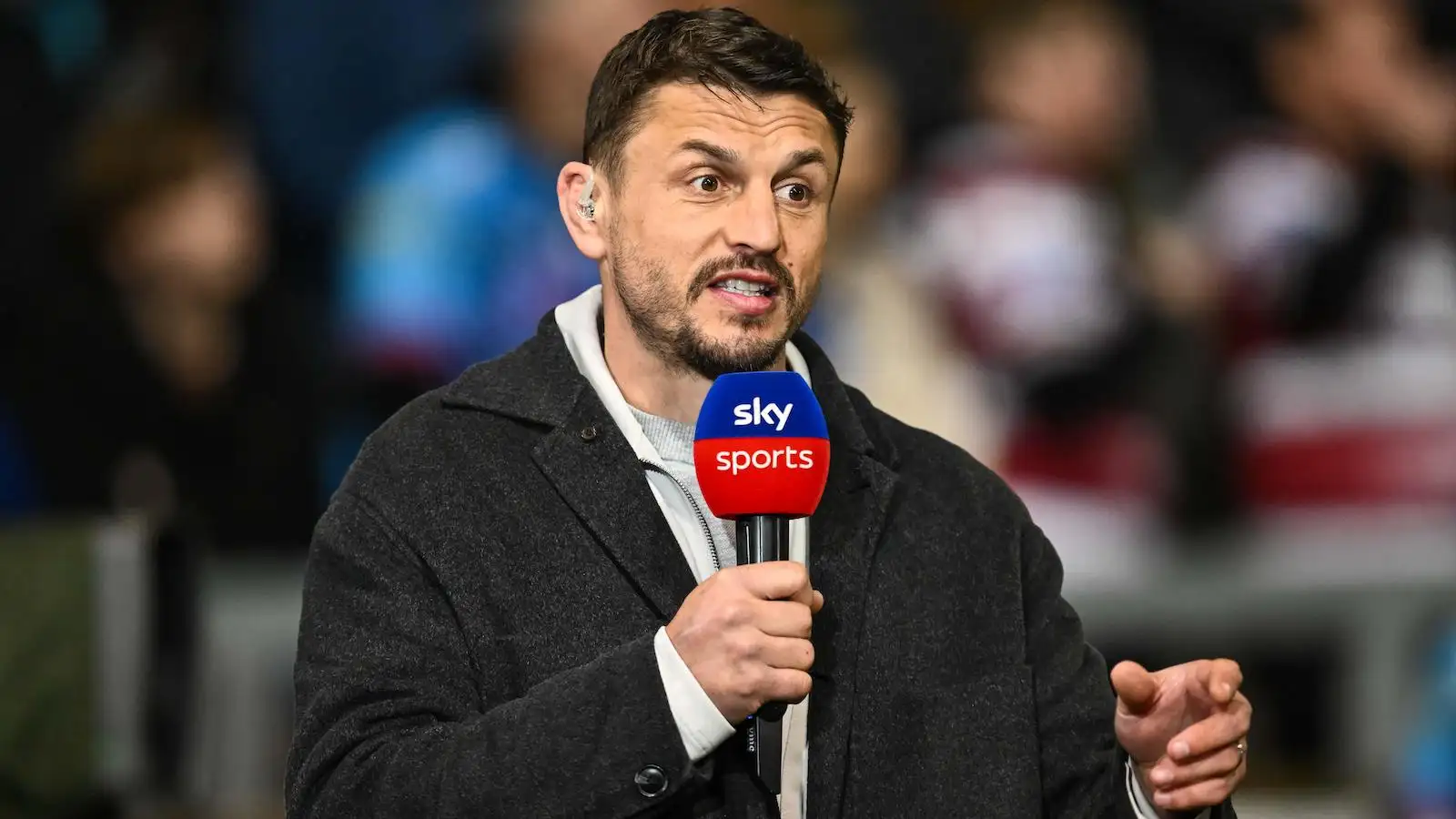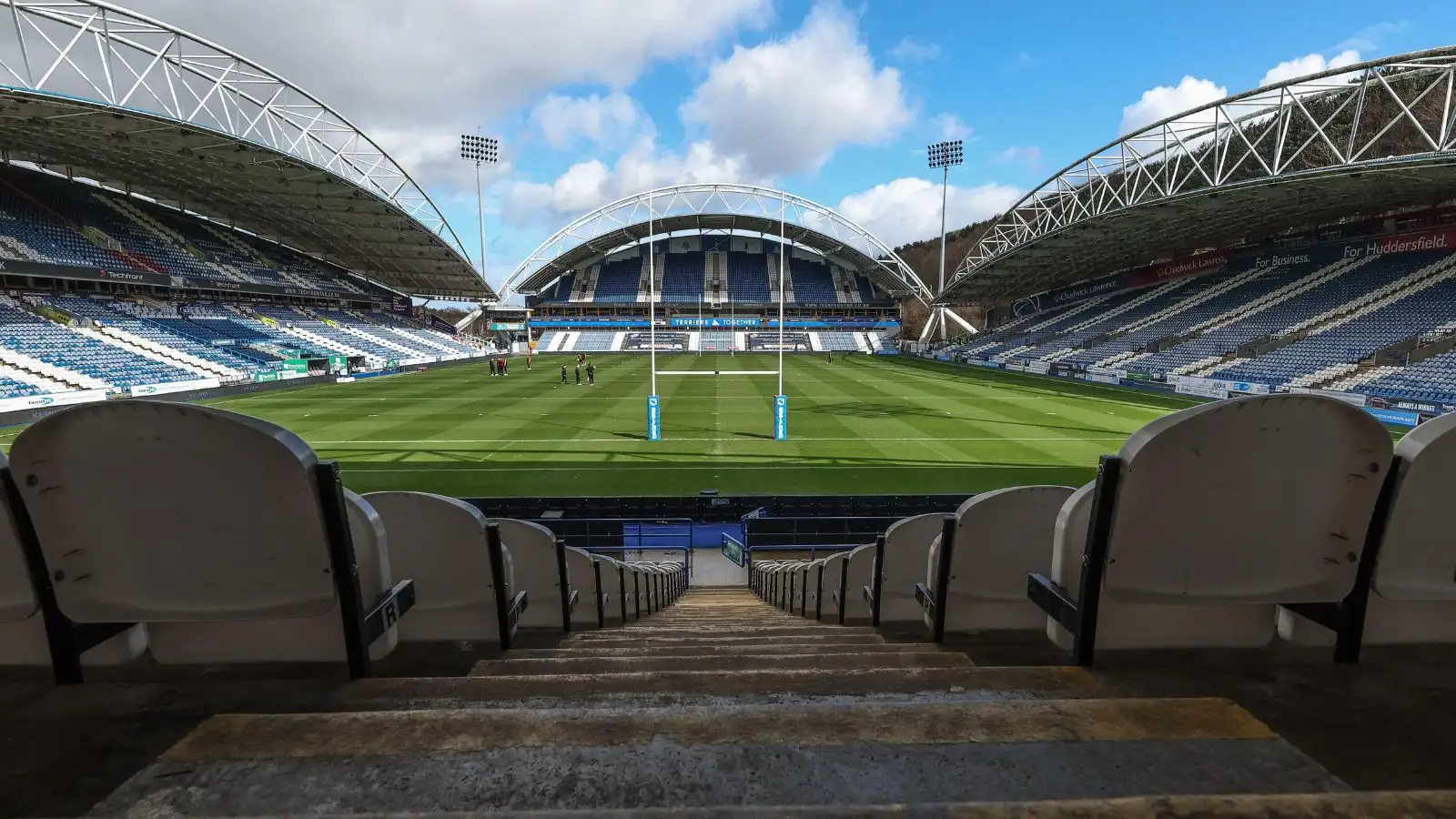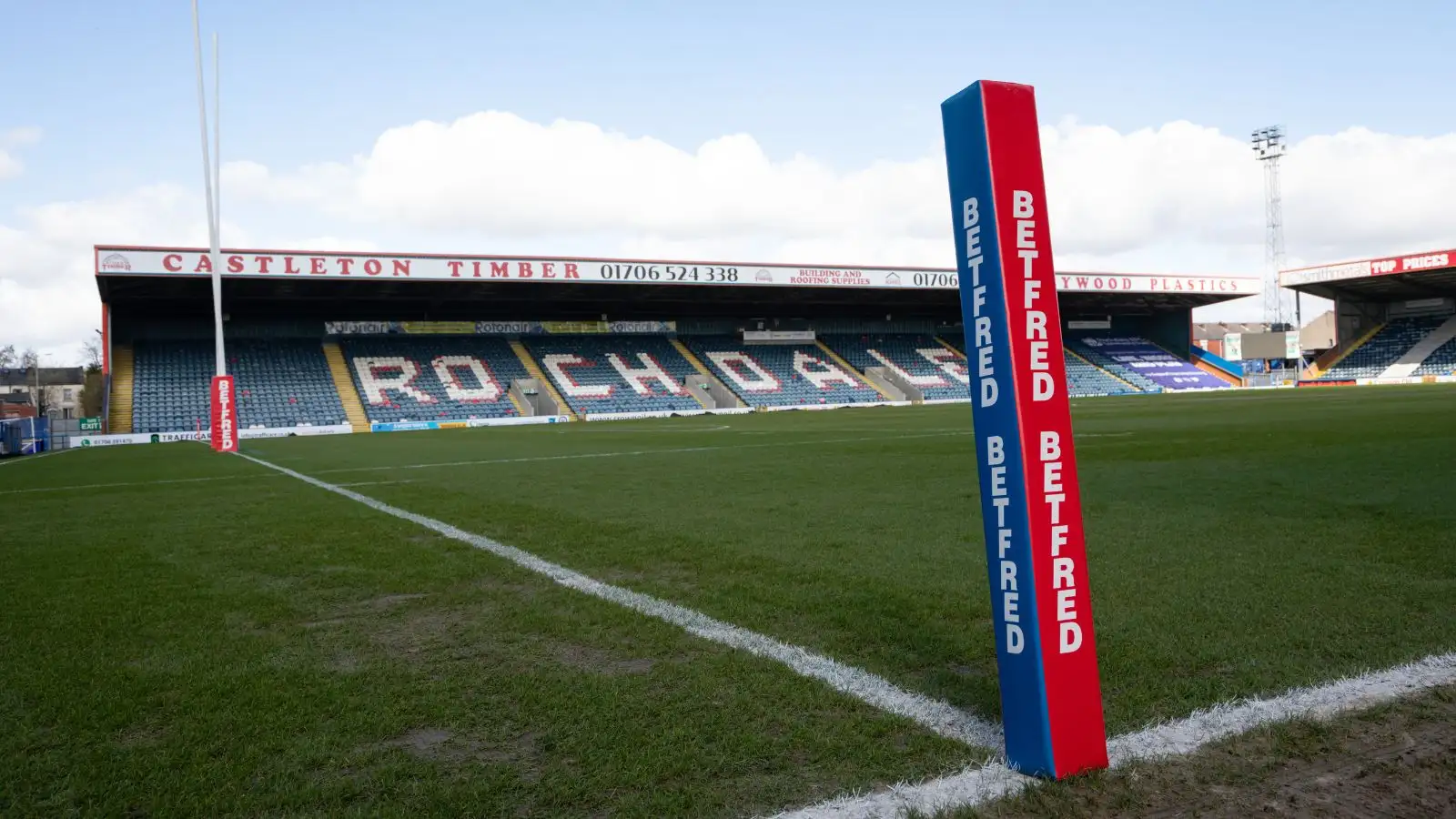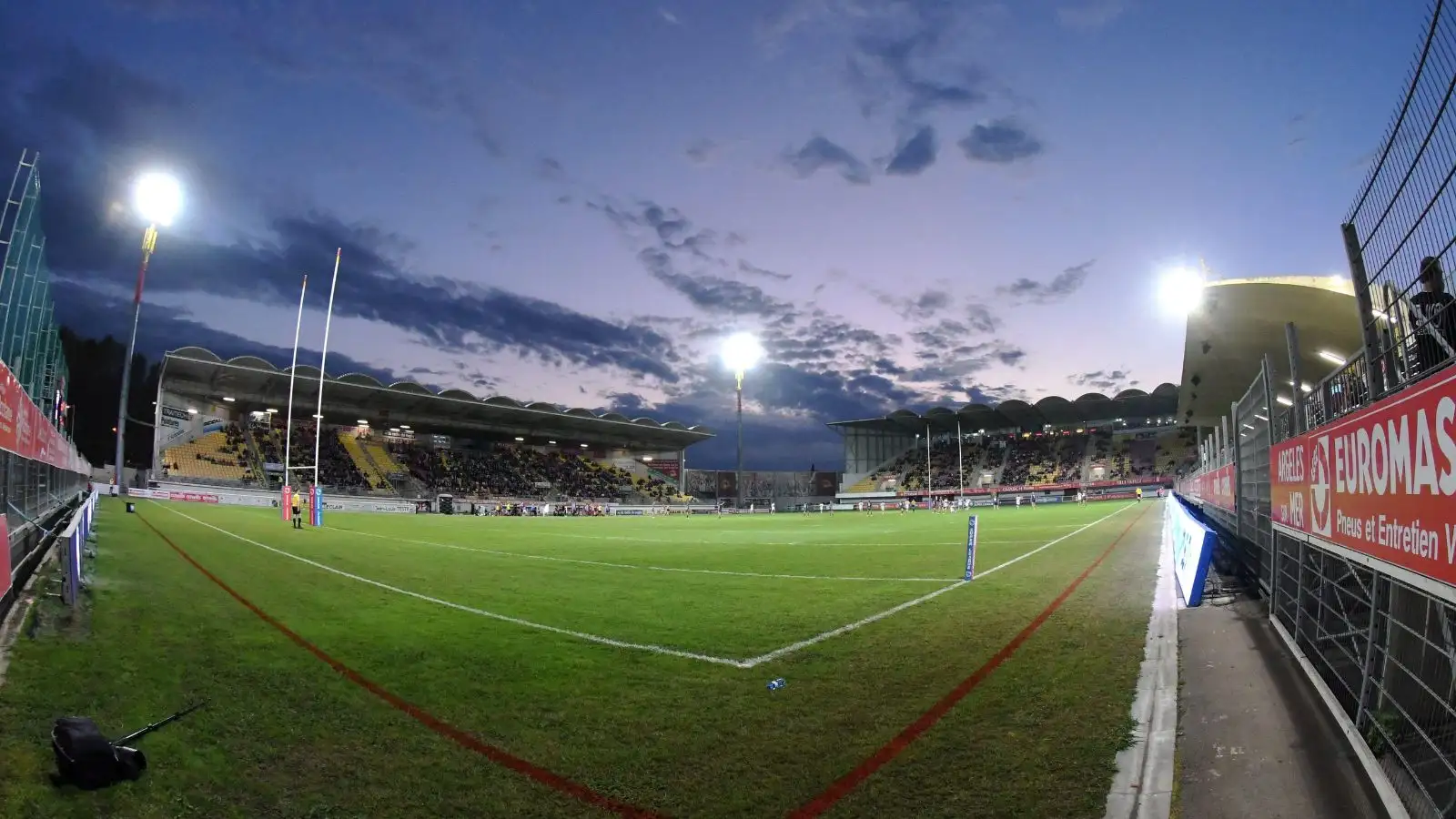IMG Exclusive: How to grow Super League, the women’s game and metrics for success
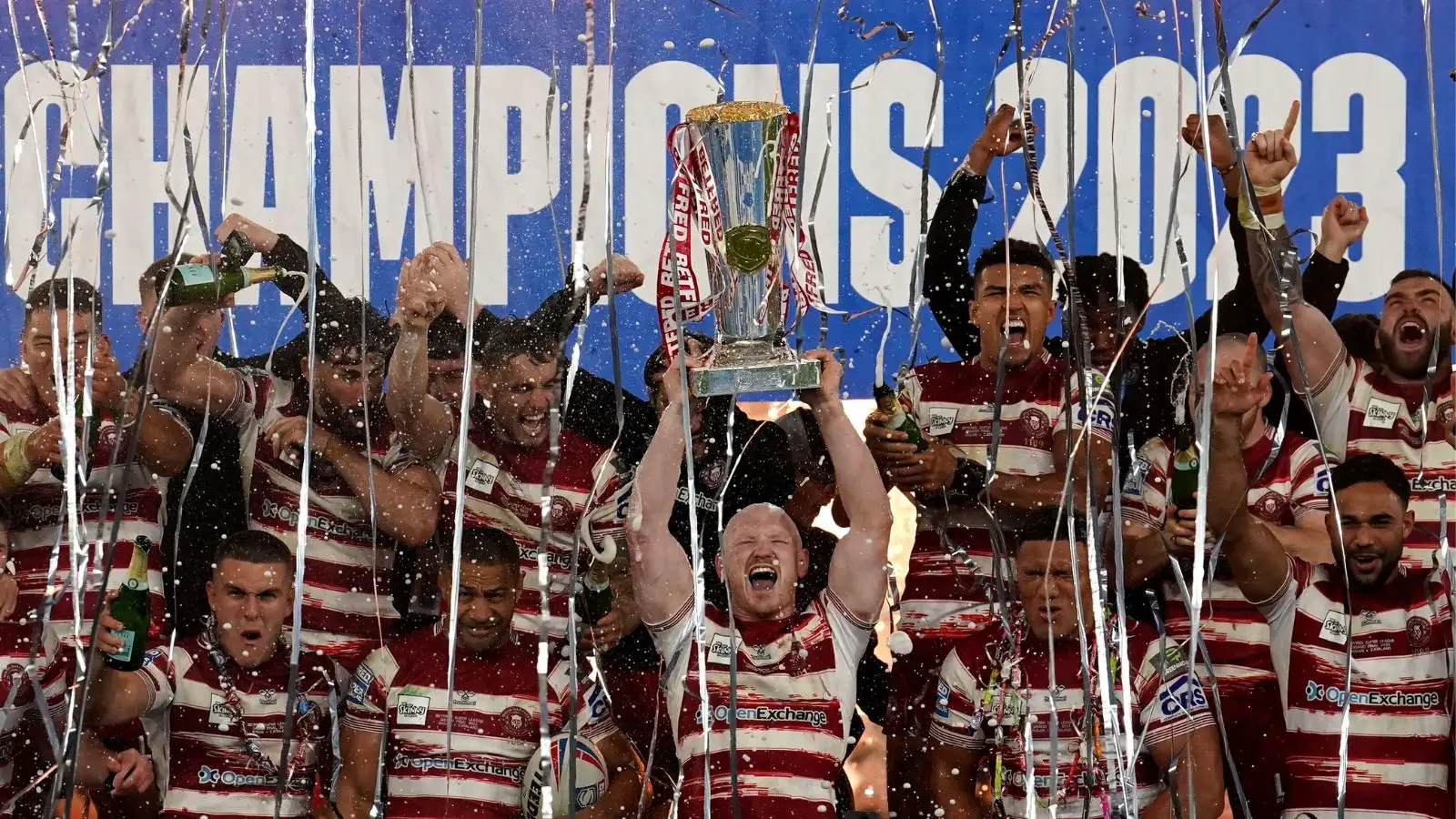
Wigan captain Liam Farrell lifts the Super League trophy at Old Trafford
All week, ahead of the new Super League season, Love Rugby League has published a series of interviews with IMG’s Vice President of sports management, Matt Dwyer, to learn more about the company’s plans to transform rugby league’s long-term fortunes.
Part one covered the unprecedented broadcast coverage Super League is about to experience this year, while part two discussed the heavily-debated gradings system and the logistics behind it. Those interviews can be read below: this is the third and final part, discussing the metrics what success looks like in the short and long-term, the Women’s Super League and much more.
Part One: IMG’s Matt Dwyer on Super League+, capitalising on exposure and marketing superstars
Part Two: Exclusive: IMG boss discusses Super League gradings, London controversy and competition rebrand
How do you measure success if you’re barely a year into a 12-year partnership to revolutionise a sport? For IMG’s Matt Dwyer, there is one clear answer – and it is the one metric that will judge whether or not the wholesale changes we are seeing in the run-up to the new season have been a success.
“It’s just fans,” he insists to Love Rugby League. “We want more fans in the sport. You can measure that in many ways; bums on seats, TV ratings on Sky or the BBC, it could be social media following or engagement.. across all those metrics, we’ll look at them all.
“The ultimate objective of the relationship between IMG and Rugby League Commercial is to grow our fanbase as much as we possibly can. Everything else works itself out off the back of that. We need as as many fans consuming it in as many ways as possible.”
Retaining existing support is clearly important, and engaging with lapsed fans, who have perhaps lost confidence in the game’s direction, is another strand of work for IMG. But arguably the biggest pool for Dwyer and his team to tap into is attracting new fans.
He has already discussed in an earlier interview how marketing superstars like Jack Welsby is the key to ensuring younger supporters are drawn to rugby league for the first time. But is one issue not the future of Super League, but more its history: notably the fact that there have only been four competition winners since its launch in 1996? For balance in that time period, the NRL has had 12 different champions.
LONG READ: The Hull derby: inside the game which divides families and is unlike any other
Some have long argued that a lack of unpredictability and the fact there has not been a new winner of Super League for 20 years now makes it difficult to market. Dwyer understands that rationale, but insists it is not a fatal flaw of Super League.
“When we went back to when we started working on this partnership, we covered in the recommendations that if you compare it to the NRL, I think every club except one had played in the finals in the Super League era,” Dwyer says.
“They have had twelve different winners during that time too, compared to the four we’ve had – and one of those isn’t in Super League at the moment (Bradford Bulls). You look at the American sports as an example and the level of competitiveness is what’s interesting.

“People get home from work and they’re interested if they don’t know what’s going to happen. If you know what’s going to happen, you can just read the score at the end and watch the highlights. It’s important to have a league where people watch it because they don’t know what will happen.
“That’s vital in all sports and one of the reasons behind grading is we want to get clubs up to Category A and one of the fallouts of that is you’re in a position to put a competitive squad together. The more A clubs we have, the more unpredictable the competition gets. I want to get Super League to a point where any team can beat any other team on any given day.”
But this long-term plan is not just about developing the men’s game. The women’s side of things is also high on IMG’s agenda – but like everything they are doing in the sport, they are determined not to rush the progress for the sake of a headline. Indeed, there is a plan for the WSL and the women’s game on the whole – and it will be built from the bottom upwards.
DON’T MISS: The secrets behind Steve McNamara’s reign as Super League’s longest-serving head coach
“The long-term aim is to have a strong, viable women’s league for the sport,” Dwyer says. “But in many ways with the women’s game, it’s the other way round. We need participation in our sport, we need quantity of players that are there to be able to bring in more teams and do that side of it.
“I’d feed that back a bit to the exposure element again. It’s getting more girls and women seeing our game and thinking they want to give it a go. That feeds into your participation pathways which feeds into elite pathways and then you can start growing out your league.
“The NRLW did a good job with that, they started with four teams and got a real solid league happening before expanding it. They got exposure and then more girls started playing, and that started to increase the player pool and the league can then grow.

“You’ve got to get the players and the interest at that grass roots level to funnel yourself up to the ultimate goal, which is a parallel competition which replicates the men’s in so many important ways. From an IMG point of view, we’re looking at that side of it very closely.”
For the first time in a long while, the possibility of genuine growth appears entirely possible for rugby league at all levels. Of course, the responsibility now rests on the shoulders of Dwyer and his team at IMG to deliver: but when he takes his seat at the Super League Grand Final later this year, how will he determine whether or not 2024 has been a success?
“If we can grow off the energy and the buzz we have right now, and that can keep on going throughout the season and we’re sitting there with a strong Old Trafford crowd and there’s interest aplenty, I think that’s a success, right?” Dwyer says.
“That’s where we want to be. That might not be this Grand Final, it might be the next one or the one after that. But I’m incredibly excited about the buzz we’ve got today, and if we can have the same level of interest that we’ve got in our Grand Final then we’re going to be sitting here happy with what we’ve delivered this year.
“We wanted more people to be interested in our sport and if we can achieve that, we’ll know we have our path and it’s going in the right direction.”
READ NOW: Ryan Brierley: Combining life as a pro rugby player and a budding football agent
